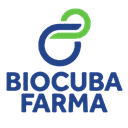Executive Secretary

VIII International Symposium on Chemistry and Pharmaceutical Sciences
STA
V International Symposium "Technological and Environmental Security"
Abstract
Problem: Since 2011, the massive arrival of brown algae to the Caribbean coast has been reported, causing negative impacts on coastal and marine ecosystems and essential economic sectors for the geographical area, such as fishing and tourism.
Objective: Characterize the sargassum that reached the coasts of eight Dominican beaches in 2021.
Methodology: The analysis of heavy, alkaline and alkaline earth metals was carried out by ICP-OES.
Results and Discussion: Twelve heavy metals were studied, the highest concentrations corresponding to Fe, As and Zn. Regarding alkali and alkaline earth metals, the highest concentrations were detected for Ca, K, Na and Mg. The high values of arsenic and salts of alkali and alkaline earth metals do not recommend the use of these algae in agriculture. The heavy metal contamination index was determined, which ranged between 0.318 and 3.279.
Conclusions: The presence of the three species of sargassum that arrived in the Caribbean was confirmed, S. fluitans III, S. natans I and S. natans VIII, with Sargassum fluitans III predominating. The content of eleven heavy metals was determined. Only arsenic was above the values defined in the standards for use in agriculture or animal feed. Regarding alkali and alkaline earth metals, the highest concentrations were detected for Ca, K, Na and Mg, adding another drawback for use as fertilizer. The need to maintain constant monitoring of the composition of sargassum to decide on possible applications is confirmed.
Resumen
Problemática: Desde 2011 se reporta la llegada masiva de algas pardas a las costas del Caribe, provocando impactos negativos en ecosistemas costeros y marinos y sectores económicos esenciales para el área geográfica, como la pesca y el turismo.
Objetivo: Caracterizar el sargazo que llegó a las costas de ocho playas dominicanas en el 2021.
Metodología: El análisis de metales pesados, alcalinos y alcalinotérreos se realizó por ICP-OES.
Resultados y Discusión: Se estudiaron doce metales pesados, correspondiendo las concentraciones más altas a Fe, As y Zn. Respecto a los metales alcalinos y alcalinotérreos, las mayores concentraciones se detectaron para Ca, K, Na y Mg. Los altos valores de arsénico y sales de metales alcalinos y alcalinotérreos no recomiendan el uso de estas algas en la agricultura. Se determinó el índice de contaminación por metales pesados, el cual osciló entre 0,318 y 3,279.
Conclusiones: Se constató la presencia de las tres especies de sargazo que llegaron al Caribe, S. fluitans III, S. natans I y S. natans VIII, predominando el Sargassum fluitans III. Se determinó el contenido de once metales pesados. Sólo el arsénico estuvo por encima de los valores definidos en las normas para su uso en la agricultura o la alimentación animal. Respecto a los metales alcalinos y alcalinotérreos, las mayores concentraciones se detectaron para Ca, K, Na y Mg, agregando otro inconveniente para el uso como fertilizante. Se confirma la necesidad de mantener un seguimiento constante de la composición del sargazo para decidir sobre posibles aplicaciones.
About The Speaker

Rolando Esteban Liranzo Gómez
Discussion




